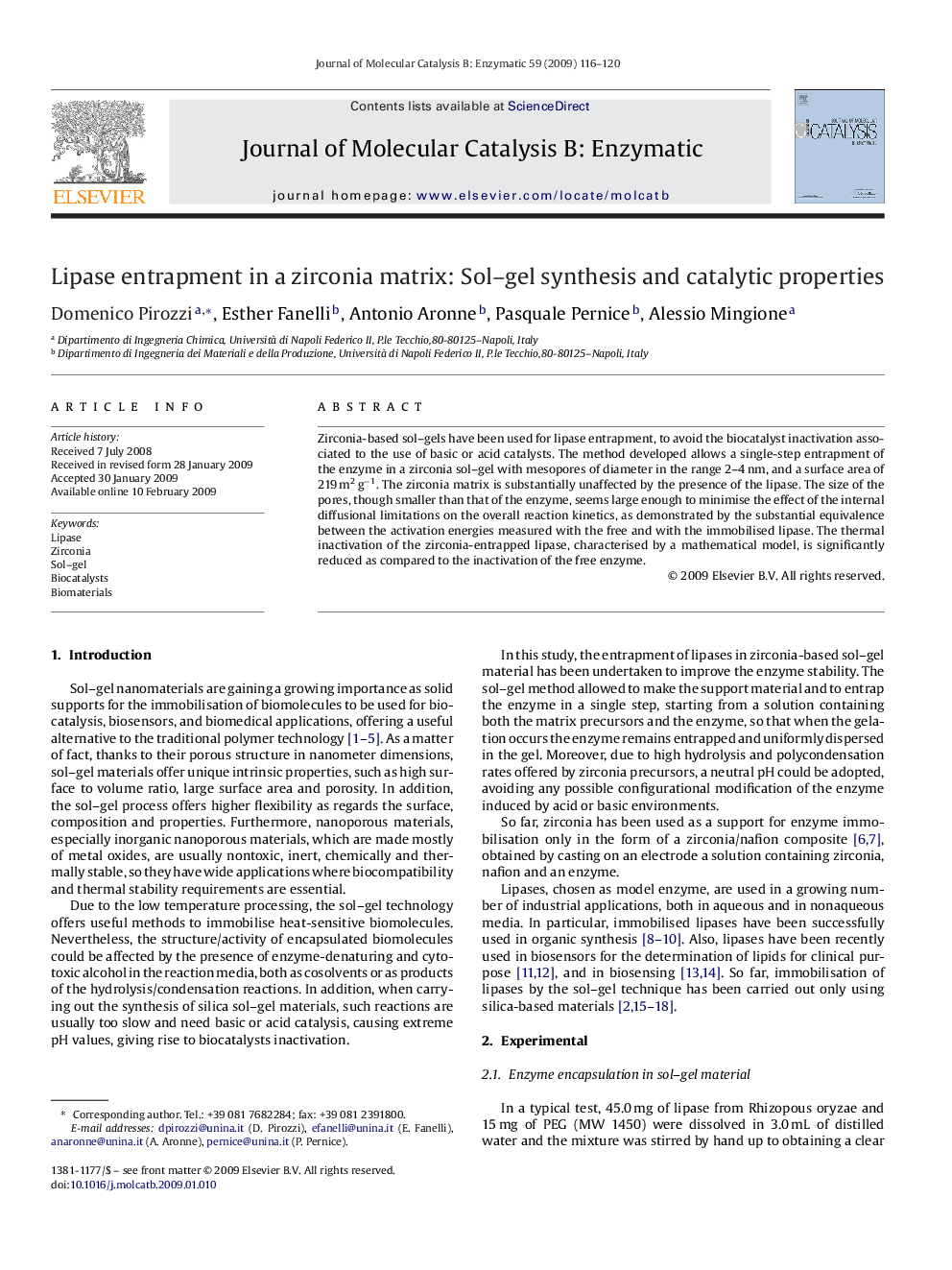| Article ID | Journal | Published Year | Pages | File Type |
|---|---|---|---|---|
| 70633 | Journal of Molecular Catalysis B: Enzymatic | 2009 | 5 Pages |
Zirconia-based sol–gels have been used for lipase entrapment, to avoid the biocatalyst inactivation associated to the use of basic or acid catalysts. The method developed allows a single-step entrapment of the enzyme in a zirconia sol–gel with mesopores of diameter in the range 2–4 nm, and a surface area of 219 m2 g−1. The zirconia matrix is substantially unaffected by the presence of the lipase. The size of the pores, though smaller than that of the enzyme, seems large enough to minimise the effect of the internal diffusional limitations on the overall reaction kinetics, as demonstrated by the substantial equivalence between the activation energies measured with the free and with the immobilised lipase. The thermal inactivation of the zirconia-entrapped lipase, characterised by a mathematical model, is significantly reduced as compared to the inactivation of the free enzyme.
